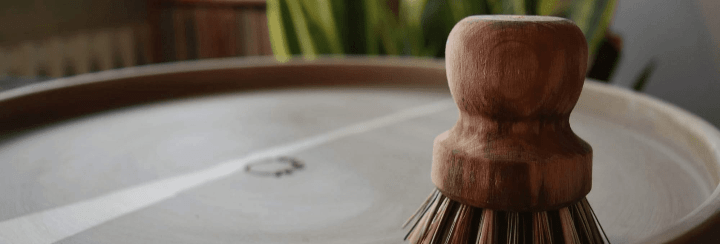Why is my composter discolored?
The porosity of the clay allows water to evaporate from the surface of the composter, creating an ideal climate for vermicomposting. Lime (white) and humic substances (brown) are dissolved in the water and remain on the surface when the water evaporates. These efflorescences are a characteristic feature of porous clay pots. Even algae can thrive on the composter if it is outside in a damp location. In this way, every composter develops its individual patina over the course of its useful life, appropriate to the location.


Left : Compost bin on the balcony after a summer: the algae also liked the cooling water in the lid. Right : after brushing off the lid with running water.
How can I clean the WormUp HOME?
If the efflorescence bothers you, you can wipe the outside of the composter with a damp cloth from time to time during operation. Care is even easier after harvesting: Soak the harvested, empty element in the bathtub for approx. 30 - 60 minutes and clean it with a brush/sponge. If water alone isn't enough, you can also add a few dashes of vinegar. Then rinse the ring with clear water!


Left : Here the lowest element was a little calcified. Center : Simply brush off the outside with a damp brush or Right : add a little more vinegar to the water and the composter is sparkling clean again.
What to do if there is very strong efflorescence?
Strong discoloration or even leaking liquid are a sign of a composter that is too damp and can be dangerous for the worms! Check humidity in all elements and take action. Mix in dry material and reduce addition of waste with a high water content (eg lettuce).
caution
Do not put in the dishwasher. Do not clean with detergents or chemicals.

